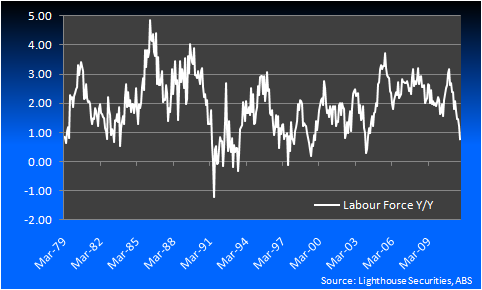Looks like I got a bit ahead of the market earlier in the week. No evidence yet of a further weakening in the labour market, even if the various marginal indicators are showing it. Unemployment was stable at 5.2%, with 20k full time jobs created and 10k part time lost. Here’s the details from the ABS:
OCTOBER KEY POINTS
TREND ESTIMATES (MONTHLY CHANGE)
- Employment increased to 11,453,300.
- Unemployment increased to 639,500.
- Unemployment rate increased to 5.3%.
- Participation rate steady at 65.6%.
- Aggregate monthly hours worked increased to 1,624.8 million hours.
SEASONALLY ADJUSTED ESTIMATES (MONTHLY CHANGE)
- Employment increased 10,100 (0.1%) to 11,462,300. Full-time employment increased 20,000 persons to 8,067,500 and part-time employment decreased 9,900 persons to 3,394,800.
- Unemployment decreased 5,700 (0.9%) to 630,800. The number of persons looking for part-time work decreased 15,400 to 165,800 and the number of persons looking for full-time work increased 9,800 to 465,000.
- The unemployment rate at 5.2%. The male unemployment rate increased 0.1 pts to 5.3% and the female unemployment rate decreased 0.2 pts to 5.2%.
- The participation rate decreased 0.1 pts to 65.6%.
- Aggregate monthly hours worked increased 10.4 million hours to 1,626.0 million hours.
To the charts. First, the result came in bang on consensus:
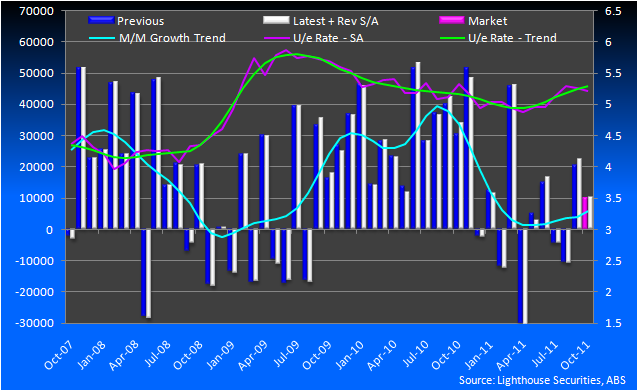
Advertisement
And here’s the mix:
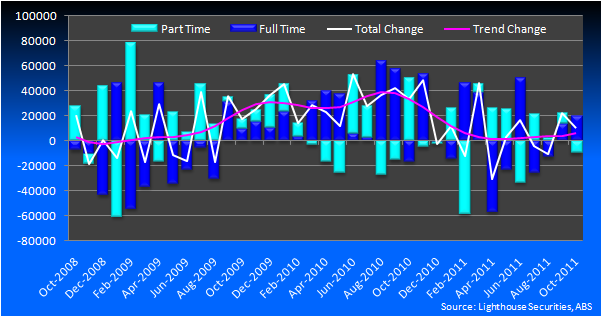
The increasing trend in hours per week remains intact:
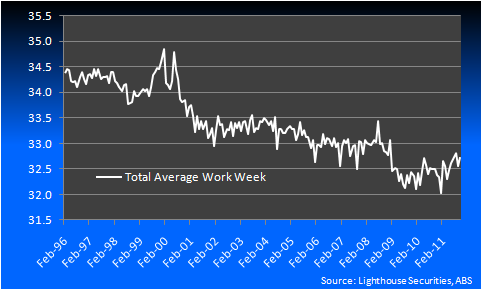
And here’s total employment to give a sense of the significance of the slowdown:
Advertisement
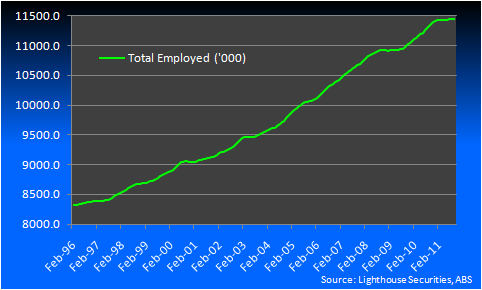
Finally, the year on year labour force growth:
